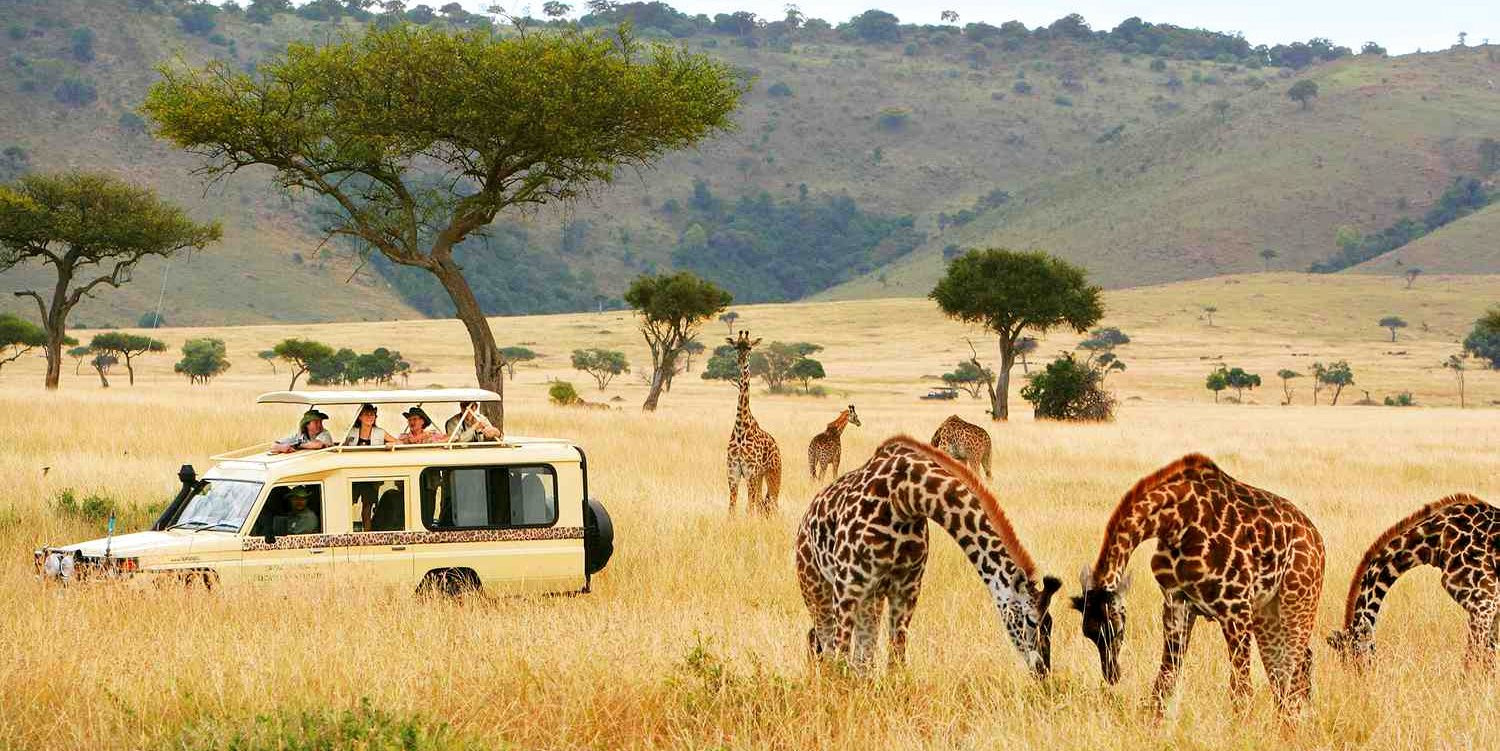Maasai Mara National Reserve
The Maasai Mara National Reserve, often simply referred to as the Maasai Mara, is one of Africa's most famous safari destinations and a jewel in Kenya's wildlife crown. Known for its exceptional population of lions, leopards, and cheetahs, the reserve also supports the annual migration of zebra, Thomson's gazelle, and wildebeest to and from the Serengeti every year from July to October, a phenomenon known as the Great Migration.
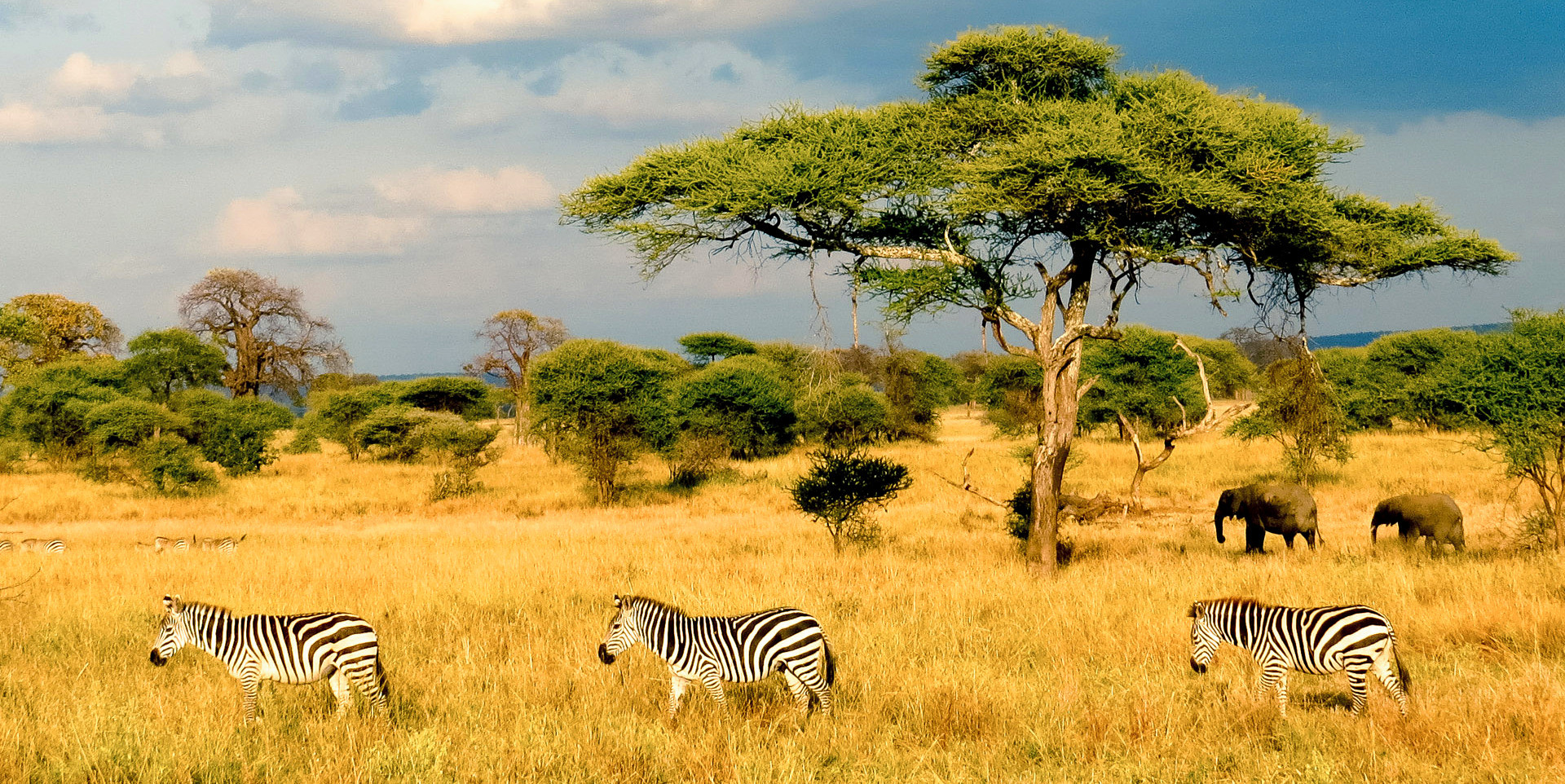
-
Geography and Climate: Located in the southwest of Kenya, covering 1,510 square kilometers, the Maasai Mara is part of the Serengeti plains ecosystem. It is bordered by the Serengeti Park to the south, the Siria escarpment to the west, and Maasai pastoral ranches to the north, east, and west. The landscape includes grassy plains and rolling hills, traversed by the Mara and Talek rivers. The climate in Maasai Mara is generally mild and damp, with two rainy seasons: April to May/June and again November to early December. Days are warm, and nights can be cool, especially from June to August.
-
Wildlife and Conservation: The reserve is best known for its large populations of big cats, elephants, and the black rhinoceros, as well as over 470 species of birds. The Great Migration, involving over 1.5 million wildebeest, zebras, and gazelles moving through the Mara, is considered one of the natural wonders of the world and is a major draw for visitors.
-
Cultural Experience: Adjacent to the reserve are several Maasai villages that offer insights into the traditional way of life of the Maasai people. These cultural visits allow tourists to experience Maasai dance, visit their homesteads (Manyattas), and see their traditional methods of livestock management.
-
Safaris and Accommodations: The Maasai Mara offers a range of safari options, from day trips to extended stays. Accommodations vary from luxury lodges to campsites, catering to different budgets and preferences. The reserve is accessible by road from Nairobi, a journey of approximately 5-6 hours, or by air with multiple daily flights landing at several airstrips within the reserve.
Visiting the Maasai Mara provides not only breathtaking views and wildlife experiences but also supports conservation efforts and the local Maasai communities, making it a must-visit destination for anyone interested in exploring Kenya's vast biodiversity.
Amboseli National Park
Amboseli National Park, located in southern Kenya, is renowned for its stunning views of Mount Kilimanjaro and its large herds of African elephants. It is one of Kenya's most popular parks and provides a quintessential East African wildlife experience in a relatively compact area.
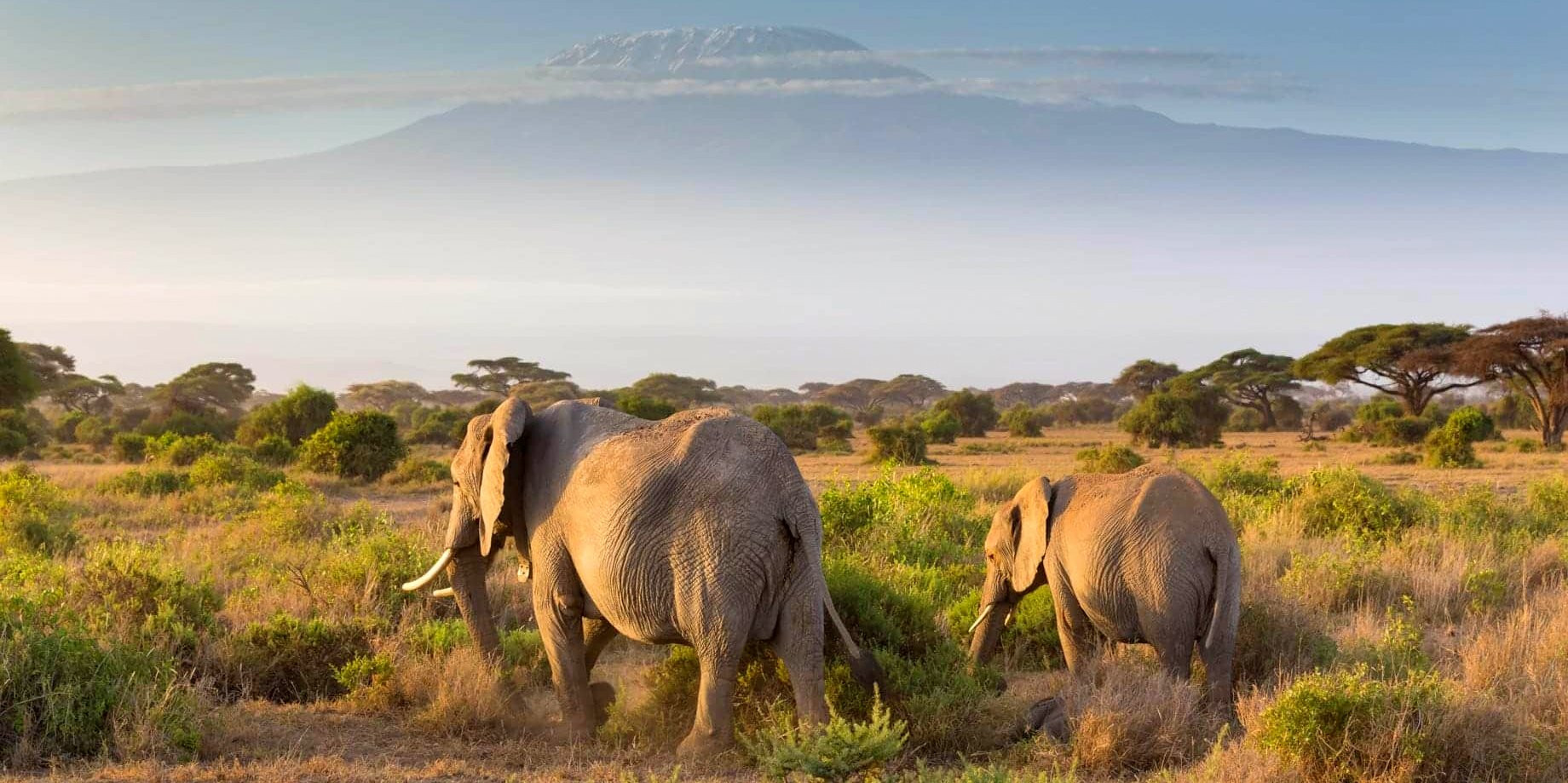
-
Geography and Climate: Amboseli covers an area of about 392 square kilometers and lies at the foot of Mount Kilimanjaro, the highest mountain in Africa. The park's landscape includes open plains, acacia woodland, rocky thorn bush country, swamps, and marshland. It has a semi-arid climate due to its proximity to the arid lands of northern Kenya, but its wetlands provide vital water sources for the wildlife during dry periods.
-
Wildlife and Conservation: Amboseli is best known for its elephants, which are some of the largest in Africa due to the abundant food and water supply in the area. The park's elephant population is known for being particularly habituated to humans, making for exceptional up-close photography and observation opportunities. Besides elephants, Amboseli is home to over 400 species of birds and other animals, including giraffes, zebras, cheetahs, and lions. Conservation efforts in Amboseli are crucial, focusing on habitat preservation and reducing the human-wildlife conflict that affects the local Maasai communities. These efforts are supported by various local and international stakeholders working together to ensure the park's ecological integrity.
-
Cultural Experiences: The park offers cultural interactions with the Maasai people, who live around the Amboseli ecosystem. Visitors can learn about the Maasai culture and their traditional, nomadic lifestyle, including their famous livestock herding practices.
-
Tourism and Facilities: Amboseli is accessible by road from Nairobi, a journey of about four to five hours, and by air with airstrips serving the park for chartered aircraft. A variety of accommodations are available ranging from luxury lodges to basic campsites, catering to different budgets and preferences. Tourism in Amboseli revolves around game drives, bird watching, and photography tours, especially with the picturesque backdrop of Kilimanjaro. Early morning is particularly magical when the mountain is often clear and beautifully framed by the rising sun.
Amboseli National Park offers a more intimate safari experience and is an essential stop for anyone wanting to experience Kenya's unique landscape and wildlife.
Lake Nakuru National Park
Lake Nakuru National Park is a standout wildlife park located in Central Kenya, known especially for its spectacular flocks of pink flamingos that often line its shores. The park encircles Lake Nakuru, a shallow alkaline lake that is part of the Rift Valley soda lakes.
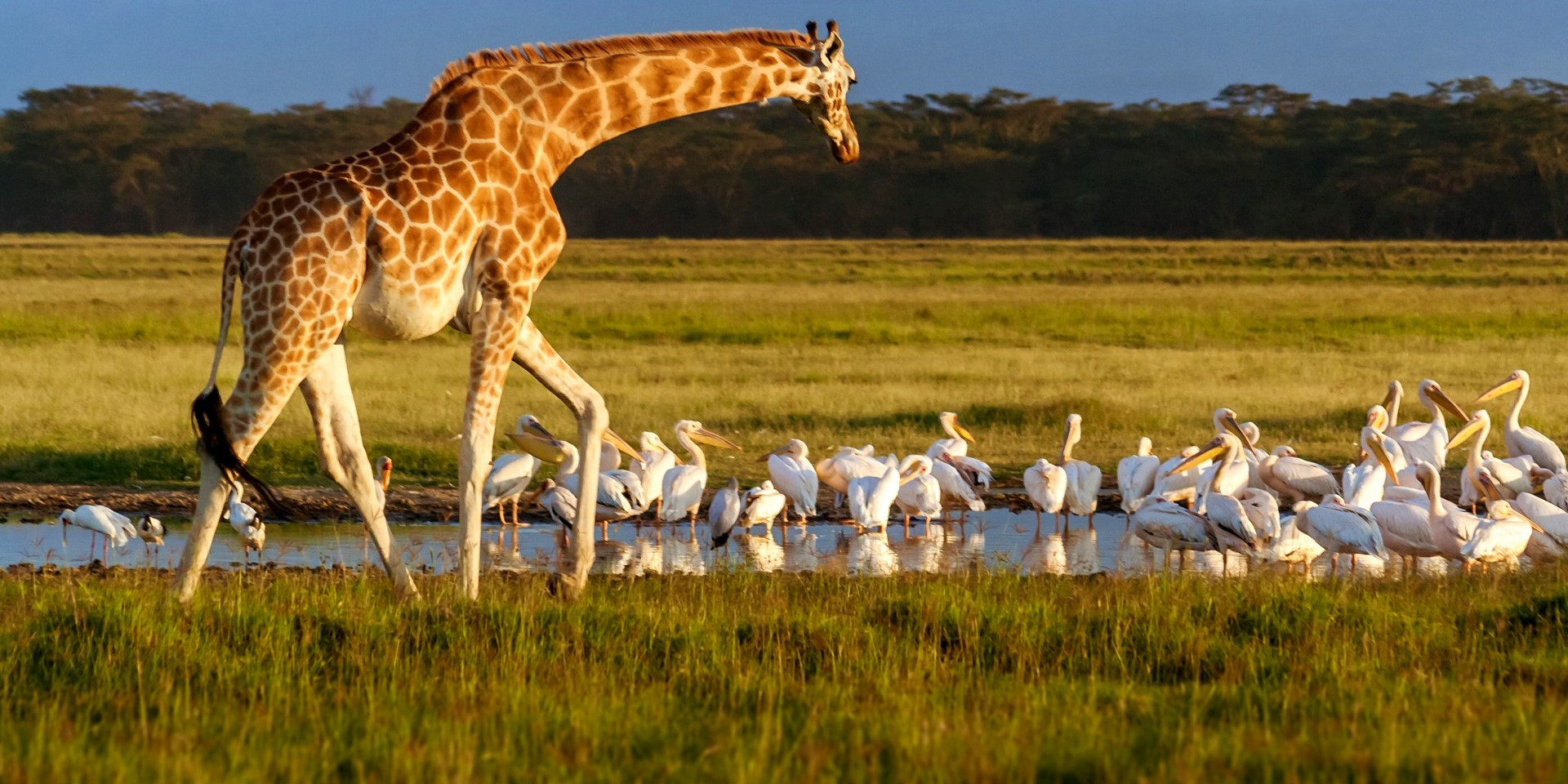
-
Geography and Climate: Lake Nakuru National Park spans approximately 188 square kilometers and includes a range of habitats from the lake waters, marshes, and grasslands to rocky cliffs and woodland. This diversity supports a wide array of wildlife. The park experiences a mild climate, with temperatures varying little throughout the year, making it a comfortable destination for tourists anytime.
-
Wildlife and Conservation: Though famous for its flamingos that feed on the algae thriving in the lake’s warm waters, Lake Nakuru National Park is also a sanctuary for endangered species such as the Rothschild's giraffe and black rhinos. It hosts an impressive array of other bird species and is an important stop on the African birding circuit. Besides birds, the park is home to lions, leopards, warthogs, waterbucks, pythons, and white rhinos. Over the years, fluctuating water levels influenced by climate changes have impacted the number and concentration of flamingos at Lake Nakuru. Conservation efforts continue to focus on preserving this unique ecosystem and the diverse species that rely on it.
-
Tourism and Facilities: The park is well facilitated for tourists, featuring well-maintained roads and several excellent viewpoints such as Baboon Cliff and Lion Hill. Various accommodations are available around the park, ranging from luxury lodges to campsites, catering to different preferences and budgets. Game drives are the most popular activity in Lake Nakuru National Park, with the early morning and late afternoon being the best times for wildlife viewing. The park's relatively small size and the abundance of wildlife make it a fantastic location for day trips or a stop on a longer safari itinerary.
Lake Nakuru National Park offers a compact yet rich safari experience, showcasing some of Kenya’s most beautiful landscapes and wildlife spectacles. Whether you are an avid birdwatcher or a wildlife enthusiast, this park provides a memorable adventure with its stunning scenery and diverse fauna.
Tsavo East and West National Parks
Tsavo East and Tsavo West National Parks are two of Kenya's largest and most iconic wildlife sanctuaries, forming one of the greatest wildlife conservancies on the planet. Together, these parks cover a vast area of over 20,000 square kilometers and offer landscapes ranging from savannas and hills to diverse woodland and forest.
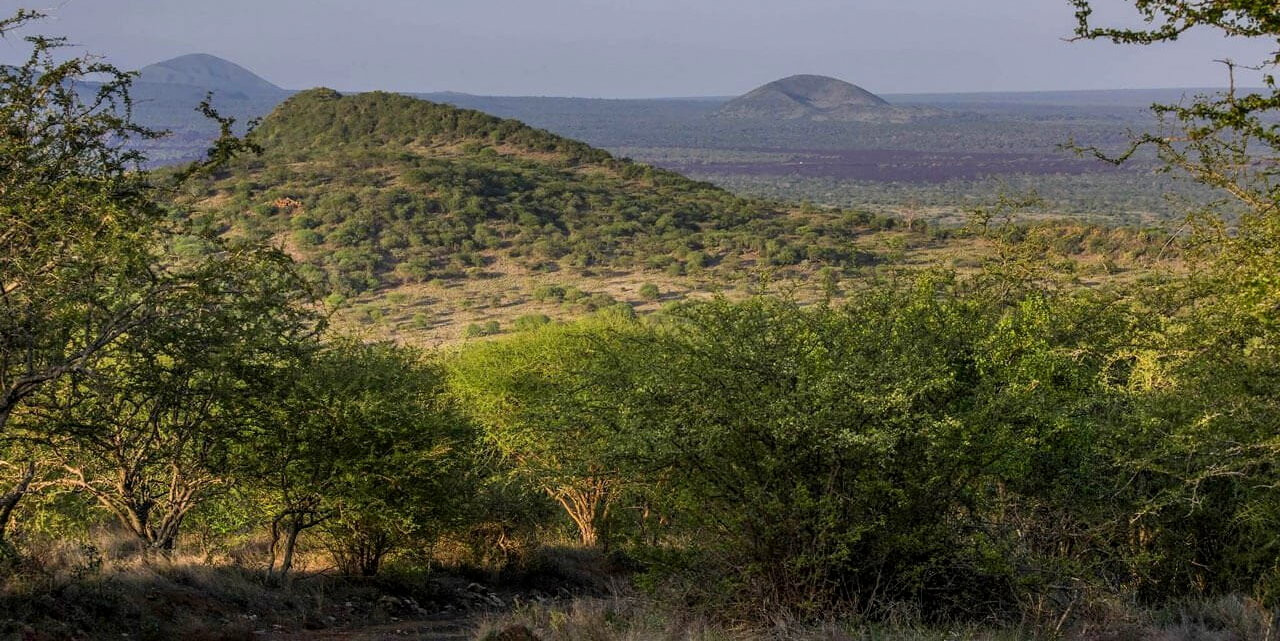
-
Geography and Climate: Tsavo East, the larger of the two, is generally flat, with dry plains across which the Galana River flows. Famous for its red soil, this park is well known for the spectacular sight of dust-red elephants wallowing, rolling, and spraying each other with the midnight blue waters of palm-shaded Galana River. Tsavo West, on the other hand, offers a more varied landscape with mountains, hills, rivers, and natural springs. One of its highlights is the Mzima Springs, a series of natural springs with crystal clear water that is home to hippos and crocodiles.
-
Wildlife and Conservation: Both parks are rich in biodiversity. Tsavo East is famed for its large herds of elephants that are often seen bathing in red dust, creating an iconic image of the park. It is also home to the man-eating lions, a story that became legendary through the construction of the Kenya-Uganda railway in the 1890s. Tsavo West, while providing habitat for elephants, is also known for its rhino sanctuary, which is part of an initiative to protect the critically endangered black rhino. Both parks together host a vast number of species including lions, leopards, cheetahs, buffaloes, diverse bird species, and more.
-
Tourism and Facilities: The parks offer various safari lodges and campsites for accommodation, ranging from luxury lodges to more modest camps, ensuring all visitors' needs are catered to. Safari tours in both parks can yield very different experiences; Tsavo East is typically more open and easier for spotting wildlife, while Tsavo West requires a bit more effort to see its inhabitants but rewards with more scenic landscapes and potentially thrilling encounters with elusive animals.
-
Activities: Visitors can engage in numerous activities such as game drives, bird watching, hiking, and visiting local attractions like the Lugard Falls in Tsavo East and the Shetani lava flow in Tsavo West. The vast size of both parks makes them ideal for long game drives, with opportunities to enjoy solitude and tranquility in nature.
Tsavo East and West offer contrasting experiences that together encapsulate the diversity and grandeur of Kenya’s wilderness. These parks provide not just a safari but a deep dive into the heart of Kenya's natural heritage, making them a must-visit for anyone looking to explore Kenya's wild landscapes.
Lamu Old Town
Lamu Old Town, located on Lamu Island in Kenya, is one of the oldest and best-preserved Swahili settlements in East Africa. This UNESCO World Heritage site is renowned for its unique architecture and urban and social structure, largely influenced by the Indian Ocean cultures.
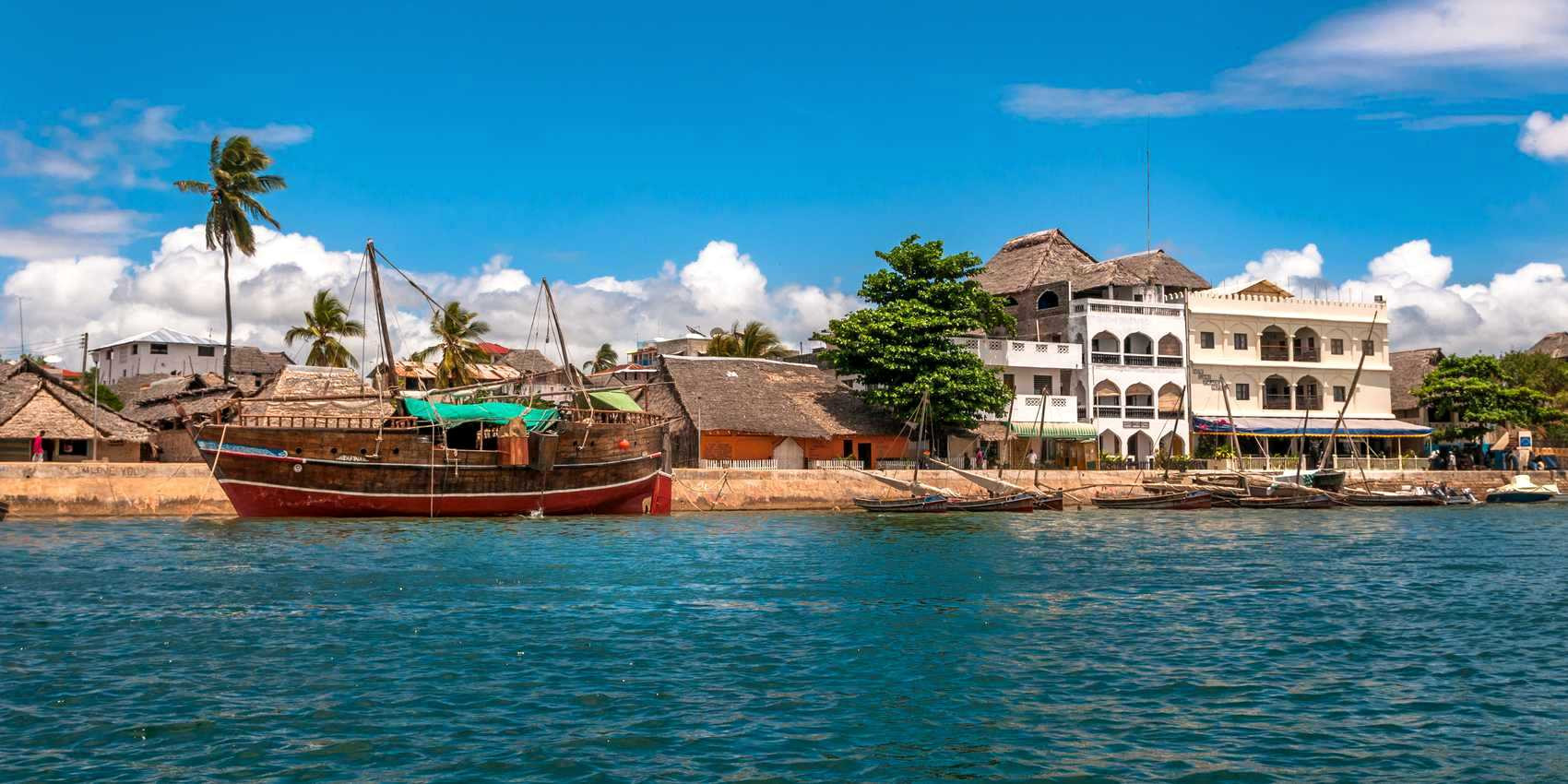
-
Historical and Cultural Significance: Lamu Old Town has a history dating back to the 12th century, reflecting the maritime trade networks between Africa, the Arabian Peninsula, and the Indian Subcontinent. The town is characterized by its narrow streets and traditional Swahili houses, many of which feature intricately carved wooden doors and coral stone buildings. This layout was adapted to the hot and humid climate, optimizing air circulation and community interactions in public spaces.
-
Architecture and Urban Design: The architecture in Lamu Old Town is a rich blend of Swahili, Arabic, Persian, and Indian influences, evident in its buildings and public spaces. The town is notable for its absence of cars; transportation is traditionally by dhow boats or on foot along its narrow alleyways. Donkeys are also a common sight, being a primary means of transport for goods and materials.
-
Cultural Experiences: Visitors to Lamu Old Town can immerse themselves in the rich cultural heritage of the area. The town is famous for its numerous festivals, including the Lamu Cultural Festival, which showcases traditional dances, dhow races, and donkey races. Additionally, the town offers several museums and historical sites, such as the Lamu Museum, which provides insights into the region's maritime history and Swahili culture.
-
Conservation Efforts: Preservation of Lamu Old Town's unique cultural and historical heritage is ongoing. Efforts by local and international bodies aim to maintain the structural integrity of its buildings and the social fabric that has been woven over centuries. These efforts ensure that the town remains a vibrant link to the past, even as it adapts to the challenges of modernity.
Lamu Old Town is not just a tourist destination but a living community that offers a window into the past, preserving a way of life that has survived the changing tides of time. It's a place where history continues to live on through its narrow streets, busy markets, and bustling harbor, making it a must-visit for those interested in history and culture.
Diani Beach
Diani Beach is a stunning coastal paradise located on the Indian Ocean coast of Kenya, about 30 kilometers south of Mombasa. Known for its white sands, turquoise waters, and lush palm trees, Diani Beach is a premier destination for tourists seeking a serene beach experience with opportunities for adventure and relaxation.
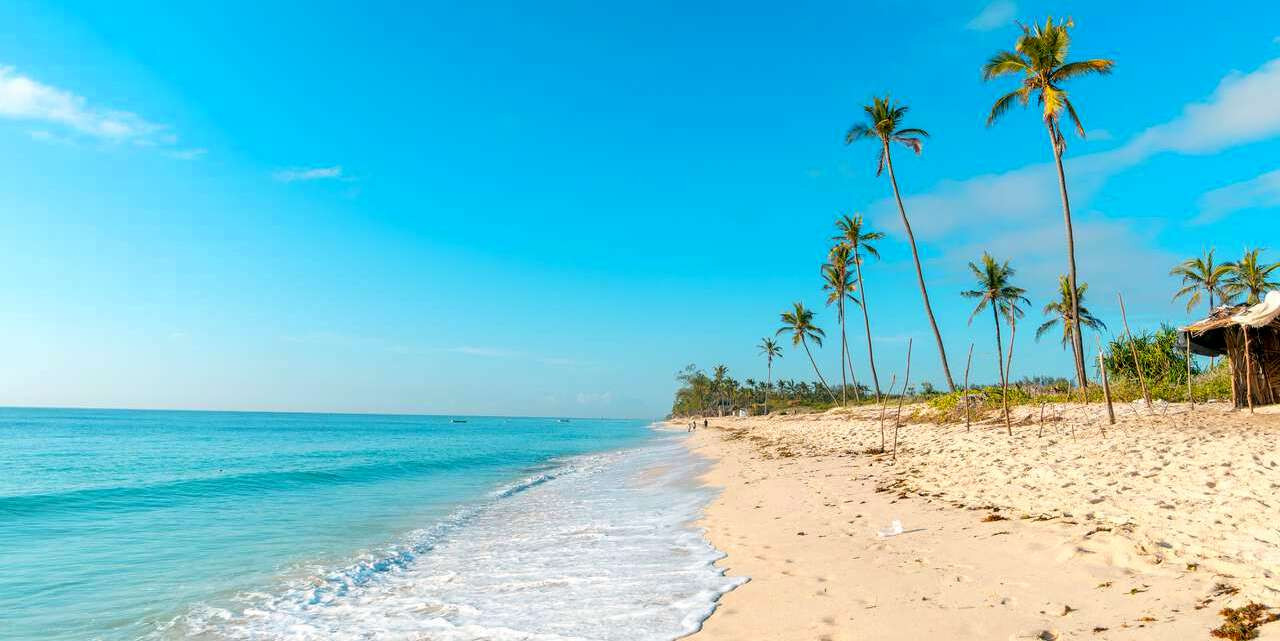
-
Natural Beauty and Activities: Diani Beach is renowned for its pristine, powdery white sand beaches that stretch over 10 kilometers along the coast. The clear, warm waters are perfect for swimming, snorkeling, and diving, with vibrant coral reefs just offshore. The beach is lined with resorts, hotels, and private villas, providing accommodations for all preferences and budgets. Water sports are a major attraction here, with activities such as kite surfing, jet skiing, and deep-sea fishing readily available. For those interested in marine life, the nearby Kisite-Mpunguti Marine National Park offers excellent opportunities for dolphin sightings and diving among colorful fish and coral gardens.
-
Eco-Tourism and Conservation: Diani Beach is also at the forefront of conservation efforts in the region. The local community is actively involved in preserving the natural beauty and health of the marine environment. Initiatives such as beach clean-ups and coral reef protections are supported by both residents and visitors. The Colobus Conservation, a facility near Diani Beach, works to promote the conservation, preservation, and protection of primates like the endangered Angolan Colobus monkey.
-
Cultural Experiences: Beyond the beach, Diani offers a rich cultural experience. Visitors can explore local markets, sample traditional Swahili dishes, and interact with the friendly Swahili people. Cultural tours to nearby villages provide insights into the local way of life and traditions.
-
Accessibility and Amenities: Diani Beach is easily accessible via Mombasa with a short ferry ride across the Likoni Channel followed by a road journey south. The Ukunda Airstrip near Diani also offers charter flights directly to and from major cities, making it convenient for international travelers. The area boasts a range of amenities from luxury resorts to budget lodges, along with a variety of restaurants and bars that cater to diverse tastes. Nightlife in Diani is vibrant, with several beach bars and nightclubs providing lively entertainment.
Diani Beach is not just a place to relax and soak in the sun; it's a destination that offers a comprehensive blend of natural beauty, recreational activities, and cultural richness, making it a must-visit location on Kenya’s Indian Ocean coastline.
Mount Kenya National Park
Mount Kenya National Park is a spectacular UNESCO World Heritage site located in central Kenya, just south of the equator. Centered around Mount Kenya, the country's highest mountain and Africa's second-highest peak after Mount Kilimanjaro, the park offers a unique blend of ecological diversity, breathtaking landscapes, and challenging adventure opportunities.
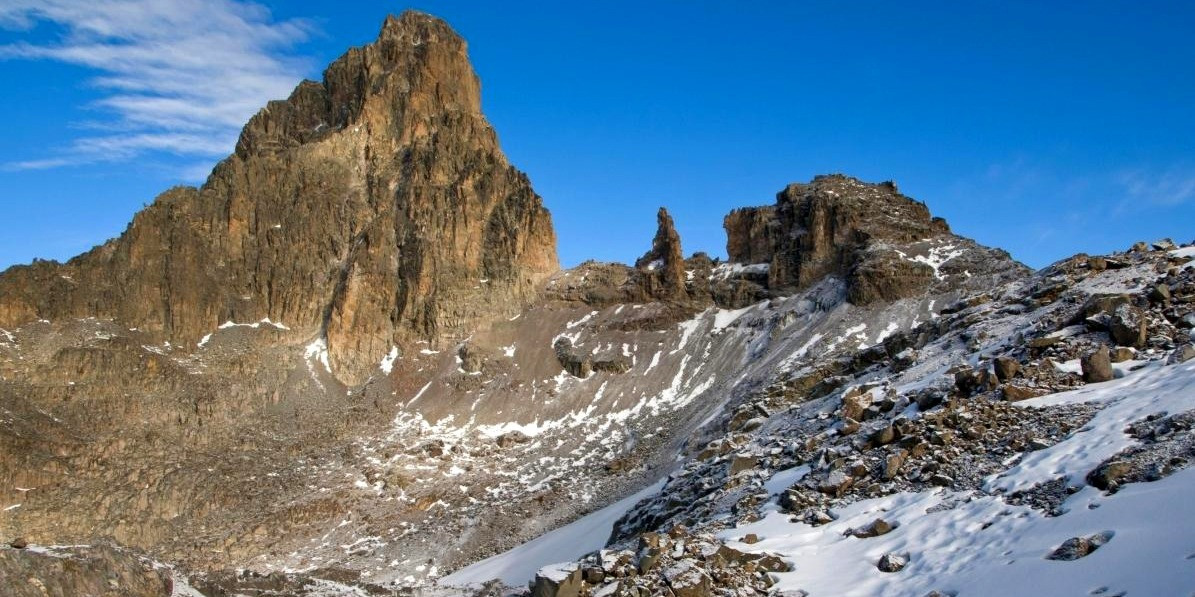
-
Geography and Climate: The park covers an area of approximately 715 square kilometers, encompassing Mount Kenya itself and the surrounding environment. The region features a variety of landscapes, from dense forest at lower altitudes to alpine meadows and finally, the rocky, snow-capped peaks. The climate varies significantly with altitude, ranging from warm in the lower forest areas to cold as you approach the icy summit.
-
Flora and Fauna: Mount Kenya is known for its rich biodiversity. The lower parts of the mountain are covered in montane forest with an abundance of tree species, while higher up, the vegetation transitions to moorlands and alpine zones with unique flora adapted to the colder temperatures. The park is home to a wide variety of wildlife, including elephants, leopards, and buffalos, as well as several endangered species such as the Mount Kenya bush viper and the bongo, a rare and elusive forest antelope.
-
Mountaineering and Trekking: Mount Kenya is a prime destination for mountaineers and trekkers. The mountain offers various routes that cater to all levels of climbers, from the relatively easy trek to Point Lenana, the third highest peak and a popular goal for most hikers, to the more technical ascents of Nelion and Batian, the highest peaks. Climbing Mount Kenya provides not only physical challenges but also spectacular views of the surrounding countryside and the chance to traverse different ecological zones.
-
Conservation Efforts: Conservation efforts in Mount Kenya National Park are crucial in protecting its sensitive ecosystems and endangered species. The park management works to combat poaching, illegal logging, and encroachment through community outreach programs and strict enforcement of conservation laws. These efforts help ensure the sustainability of the park’s natural resources and biodiversity.
-
Tourism and Facilities: The park offers a range of facilities for tourists, including lodges and campsites. It's accessible by road from Nairobi, Kenya's capital, which is approximately 150 kilometers away. Local guides and porters are available to assist with expeditions, providing valuable knowledge and support.
Mount Kenya National Park is more than just a climbing destination; it's a vital part of Kenya’s natural heritage, offering profound connections to the earth’s beauty and the thrill of high-altitude adventure. Whether you're a seasoned climber looking to tackle its rugged peaks or a nature lover eager to explore its ecological treasures, Mount Kenya National Park promises an unforgettable experience.
Hell's Gate National Park
Hell's Gate National Park, named for its intense geothermal activity and dramatic landscapes, is one of Kenya's most unique national parks. Located near Lake Naivasha and about 90 kilometers from Nairobi, this park offers a rare blend of adventure, wildlife, and stunning scenery, making it a popular spot for both day trips and longer stays.
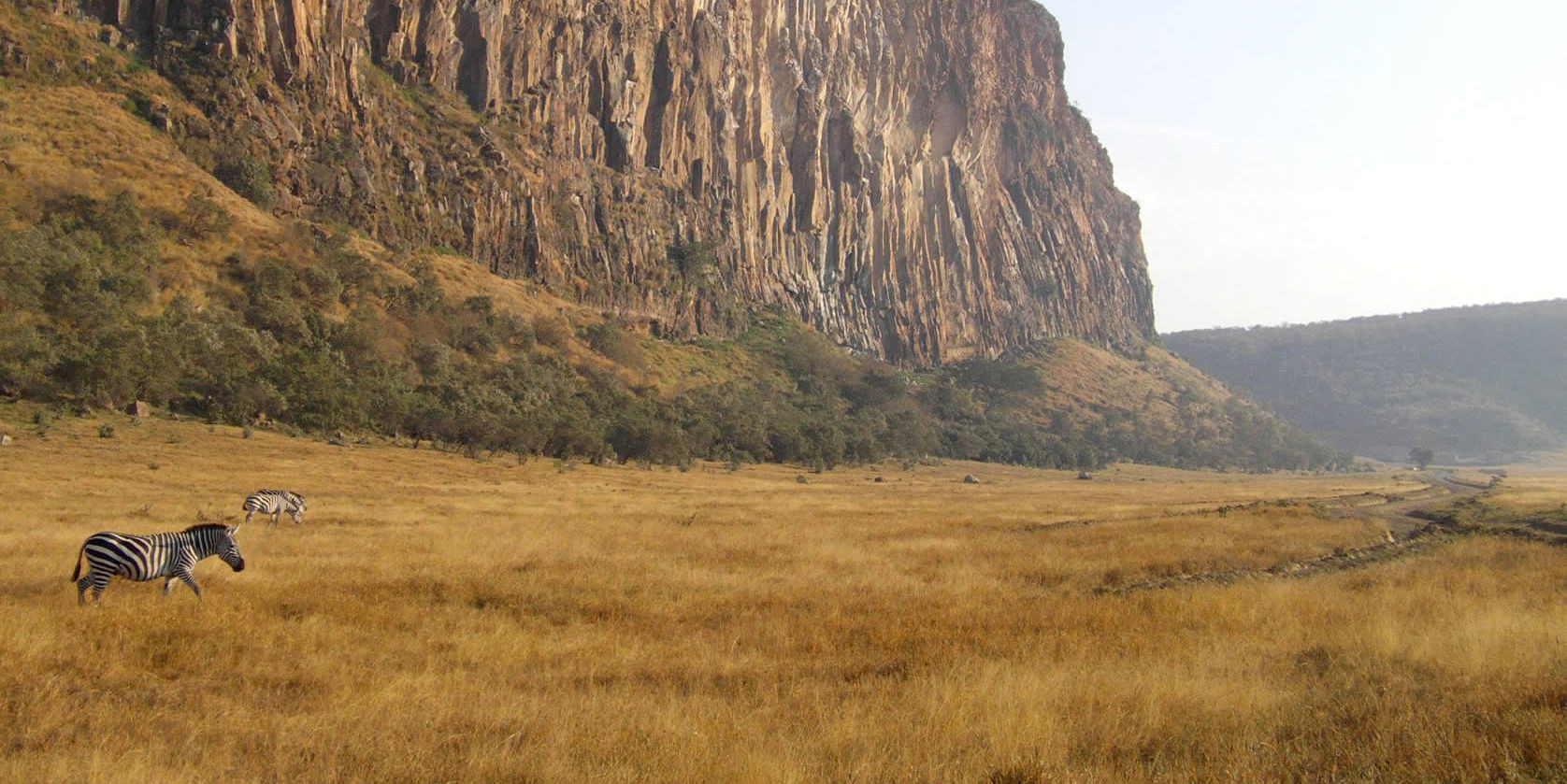
-
Geography and Unique Features: Hell's Gate is known for its distinctive landscape characterized by towering cliffs, stark rock towers, and deep gorges carved by ancient volcanic activity. The park's geothermal features include hot springs and geysers, providing a stark contrast to the typical savannah landscapes found in other Kenyan parks. This rugged terrain has been a backdrop for several films, including "The Lion King" and "Tomb Raider: The Cradle of Life."
-
Wildlife and Activities: Despite its smaller size, Hell's Gate offers a good variety of wildlife, including zebras, giraffes, elands, and over 100 species of birds. It's one of the few parks in Kenya where visitors can walk or cycle alongside the wildlife without the need for a vehicle, providing a more intimate nature experience. The park is also a haven for rock climbers, with several climbing sites that range from easy to extremely challenging. The Fischer’s Tower and Central Tower are particularly popular among climbers. Additionally, Hell's Gate is renowned for its excellent bird-watching opportunities, especially raptors such as vultures, eagles, and buzzards.
-
The Olkaria Geothermal Station: Within the park is the Olkaria Geothermal Station, the first of its kind in Africa, which harnesses the intense geothermal energy found beneath the park. Visitors can tour this facility to learn about geothermal energy production and its impact on conservation and economic activities in Kenya.
-
Cultural Impact: The Maasai communities around Hell's Gate have a rich cultural history tied to the land. Visitors often have the opportunity to interact with the Maasai people, learn about their traditions, and even visit a Maasai village.
-
Tourism and Conservation: Hell's Gate is easily accessible by road from Nairobi and is equipped with basic tourist facilities, including camping sites and picnic areas. The park's management practices focus on balancing tourism with conservation efforts to protect its unique geological features and biodiversity.
-
Overall, Hell's Gate National Park offers a diverse range of activities that appeal to adventure seekers, wildlife enthusiasts, and cultural explorers alike. Its dramatic landscape and the opportunity to closely interact with nature make it a memorable destination in Kenya's vast array of natural wonders.
Samburu National Reserve
Samburu National Reserve is a captivating wildlife sanctuary nestled in the arid and rugged semi-desert region of northern Kenya. Renowned for its remote beauty and relative tranquility, Samburu offers an off-the-beaten-path safari experience that attracts those looking to explore less commercialized areas.
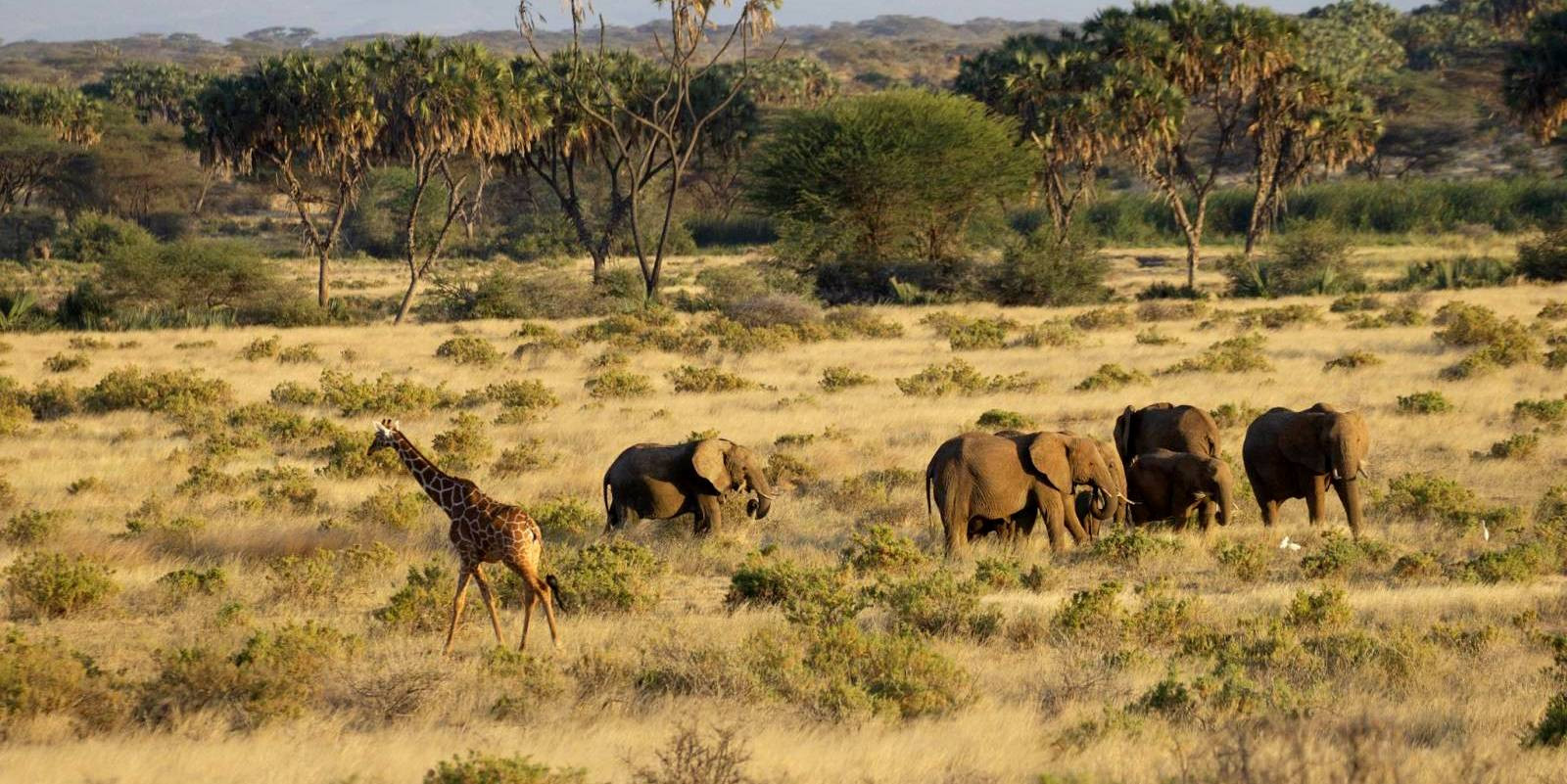
-
Geography and Climate: Situated on the banks of the Ewaso Ng'iro River, the reserve covers an area of approximately 165 square kilometers. The river provides a vital water source to the area and supports a diverse array of wildlife. The landscape around Samburu is characterized by vast, open plains dotted with scrub and bush, against a backdrop of distant hills and mountains. The climate is typically arid, with warm days and cooler nights.
-
Wildlife and Biodiversity: Samburu National Reserve is celebrated for its rich wildlife, notably the "Samburu Special Five" – a group of animals unique to the northern Kenya region. These include the Grevy’s zebra, Somali ostrich, reticulated giraffe, gerenuk, and Beisa oryx. In addition to these, the reserve hosts large populations of elephants, lions, cheetahs, and leopards, making it an excellent location for viewing big cats. Birdlife in Samburu is also prolific, with over 450 species recorded, making it a paradise for bird watchers. The lush riverine forest along the Ewaso Ng'iro River is particularly rich in avian species.
-
Cultural Experiences: Samburu is also home to the Samburu people, close relatives of the Maasai, who have maintained much of their traditional way of life and culture. Visitors often have the opportunity to visit Samburu villages, learn about their pastoral lifestyle, traditional dances, and social structures, providing a deep cultural dimension to their safari experience.
-
Conservation Efforts: Conservation efforts in Samburu are crucial due to the unique biodiversity and the challenges posed by poaching and habitat loss. Various organizations work in collaboration with local communities to protect wildlife and promote sustainable tourism practices that benefit both the environment and the indigenous people.
-
Tourism and Accessibility: Despite its remote location, Samburu National Reserve is accessible via scheduled flights from Nairobi to nearby airstrips or by road, though the journey by road can be quite long and rugged. The reserve offers a range of accommodation options, from luxury lodges to more rustic tented camps, ensuring that visitors can experience the natural beauty of Samburu in comfort.
Overall, Samburu National Reserve offers a unique safari experience, combining spectacular wildlife viewing with rich cultural interactions and the beauty of a serene, untouched landscape. It's an ideal destination for those seeking an authentic adventure away from the more frequented tourist paths.
Nairobi National Park
Nairobi National Park is a unique conservation area located just outside the bustling capital city of Nairobi, Kenya. It is notable for being the world's only game reserve located within a major city. Established in 1946, the park covers an area of approximately 117 square kilometers and offers a pristine wilderness experience juxtaposed with city skyscrapers as a backdrop.
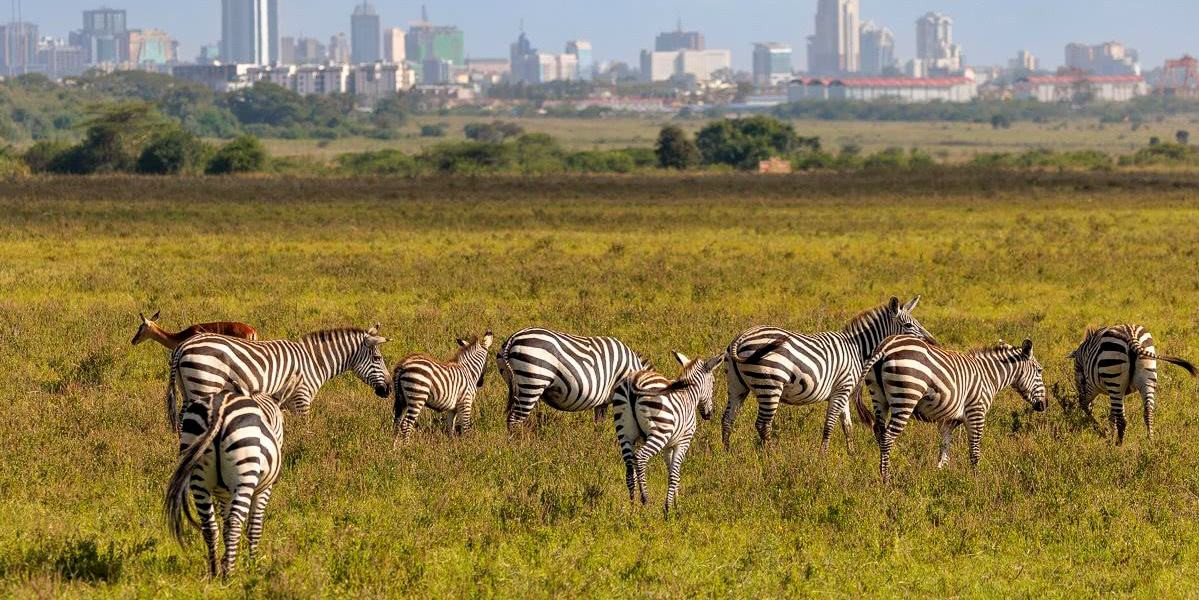
-
Geography and Environment: Nairobi National Park is situated about 7 kilometers south of Nairobi's city center. It features a varied landscape that includes open grass plains with scattered acacia bushes, a highland dry forest, and a permanent river with a riverine forest. To the south, the park is fenced, but to the north, it opens into the Kitengela Conservation Area and Athi-Kapiti plains, allowing wildlife to move freely between these areas.
-
Wildlife and Biodiversity: Despite its small size, Nairobi National Park hosts a wide variety of wildlife. It is home to the world's densest concentration of black rhinos, which are a highly endangered species. Other animal species that can be seen include lions, leopards, cheetahs, hyenas, buffaloes, giraffes, and diverse birdlife with over 400 bird species recorded. The park is especially known for its successful breeding program for the black rhino and as an important refuge for other wildlife during the dry season.
-
Activities and Facilities: The park offers several activities, including game drives, bird watching, picnics, and guided walks. The Nairobi Safari Walk and the Animal Orphanage located at the main entrance are popular with visitors, providing educational and up-close wildlife experiences. Facilities within the park are well-developed, including picnic sites, campsites, and walking trails for hikers.
-
Conservation and Community: Nairobi National Park plays a crucial role in education and conservation. It serves as an educational hub for Nairobi’s residents and visitors, providing them an opportunity to learn about wildlife and habitat conservation. The park's proximity to Nairobi also makes it a vital economic asset, contributing to local tourism revenues.
-
Challenges: Being close to a major urban center, Nairobi National Park faces unique challenges, including pollution, noise, and the encroachment of infrastructure developments. Efforts are ongoing to balance conservation activities with the city's development needs, ensuring the park remains a viable sanctuary for wildlife and an important green space for Nairobi's residents.
Nairobi National Park represents a critical sanctuary for wildlife and a natural escape for city dwellers and tourists, making it a unique attraction among the world’s conservation areas.
Tips for Must Visit Places in Kenya
Visiting Kenya is an adventure that promises remarkable experiences in its breathtaking landscapes, wildlife-rich national parks, and vibrant cities. Whether you're planning a safari or exploring the coastal regions, here are some essential tips to enhance your trip to Kenya's must-visit places:
-
Best Time to Visit: The best wildlife viewing months in Kenya are during the dry seasons from late June to October and from December to mid-March. The Great Migration usually reaches the Maasai Mara in July and remains until October when they move back to the Serengeti in Tanzania.
-
Health and Vaccinations: Ensure you have all the necessary vaccinations before traveling. Commonly recommended vaccines include those for yellow fever, typhoid, and hepatitis A and B. Malaria prophylaxis is also recommended for travel to most rural areas.
-
Safety Tips: While Kenya is generally safe for tourists, it’s advisable to take standard travel safety precautions. Avoid carrying large sums of cash, be aware of your surroundings, and use reputable tour operators and transportation services.
-
Respect Wildlife: Always maintain a safe and respectful distance from wildlife. Use a good zoom lens to capture photos rather than getting too close. Feeding or disturbing wildlife is prohibited and can alter their natural behavior.
-
Cultural Sensitivity: When visiting local communities, particularly in rural areas or cultural sites like Lamu and the Maasai villages, dress conservatively and ask permission before taking photographs of people.
-
Packing Essentials: Depending on your activities, pack light layers for the day and warmer clothes for cooler evenings, especially in the highlands and safari zones. Don't forget a hat, sunglasses, sunscreen, and a good insect repellent.
-
Eco-Friendly Travel: Be conscious of your environmental impact. Stick to marked trails, avoid single-use plastics, and consider staying at eco-lodges or camps that practice sustainable tourism.
-
Currency and Payments: The Kenyan shilling is the local currency, and while credit cards are accepted in many places, having local currency on hand for smaller purchases and tips is beneficial.
-
Connectivity: While Kenya's major cities and tourist spots have good mobile connectivity and Wi-Fi, remote areas might not have as strong coverage. Consider purchasing a local SIM card for better connectivity.
-
Local Cuisine: Don’t miss out on trying local dishes like ugali, nyama choma (grilled meat), and sukuma wiki. Seafood along the coast, particularly in places like Mombasa and Diani, is also a must-try.
Following these tips can help ensure a safe, enjoyable, and respectful trip to Kenya, allowing you to fully immerse yourself in the extraordinary natural beauty and cultural richness of this East African gem.
Ideal Time for Must Visit Places in Kenya
Visiting Kenya can vary greatly depending on the season. Here's a breakdown of what to expect in each season and the ideal activities during those times:
Dry Season (June to October)
-
Weather: This period is generally dry and cool, especially ideal for wildlife safaris.
-
Activities: It's the best time for game viewing as animals congregate around water sources. This season also coincides with the dramatic Great Migration in the Maasai Mara, making it a spectacular time for safari-goers.
-
Festivals: July to October is relatively quiet in terms of cultural festivals, with the focus more on wildlife.
Short Rains (November to December)
-
Weather: Short bursts of rain typically occur, but they are usually quick and followed by sunshine, causing little disruption to activities.
-
Activities: This is a good time for bird watching as the rains bring plenty of food and new foliage. It's also less crowded in parks, offering a more secluded safari experience.
-
Festivals: Various community and harvest festivals may occur during this period, reflecting the end of the dry season and the beginning of the rainy season.
Hot Dry Season (January to March)
-
Weather: The weather is hot and dry, with clear skies most of the time.
-
Activities: Excellent wildlife viewing continues as water remains scarce, and visibility is still very good. This is also a great time for visiting the beaches along the Kenyan coast due to the warm, clear weather.
-
Festivals: The Lamu Yoga Festival typically takes place in March, attracting visitors interested in wellness and cultural experiences on the historic Lamu Island.
Long Rains (April to May)
-
Weather: This period experiences the heaviest rainfall, which can make roads muddy and some areas inaccessible.
-
Activities: Despite the rain, this season offers lush landscapes and is the best time for agricultural tours as farms are in full production. It’s also a good period for budget travel since it's the low season with fewer tourists.
-
Festivals: There are fewer festivals during this time, but the rain brings a dramatic change in the landscape, which can be quite beautiful and photogenic.
Each season offers something different in Kenya, whether it's the vibrant wildlife experiences during the dry months or the lush, verdant scenery during the rains. Choosing when to visit can depend on your interests and the type of adventure you are seeking.
A fascinating country, Kenya provides a great deal of experiences across its many terrains. Each destination presents distinct experiences with nature, wildlife, and culture—from the world-famous safaris in the Maasai Mara to the quiet beaches of Diani. The appeal of Kenya is further enhanced by the changing seasons, rendering it a perfect year-round destination. Aside from its natural beauty, going to Kenya helps local populations and conservation projects, therefore enhancing both the heritage of the country and the experience of the tourist. A visit to Kenya offers unforgettable and powerful events, whether you are touring rough terrain or interacting with many different people.
FAQs for Must Visit Places in Kenya
Q: What is the best time to visit Kenya for wildlife viewing?
A: The optimal times for wildlife viewing in Kenya are during the dry seasons, from June to October and from December to March. The Great Migration, a particularly spectacular event, usually occurs between July and October in the Maasai Mara.
Q: Do I need a visa to visit Kenya?
A: Yes, most foreign nationals require a visa to enter Kenya. Visitors can apply for an e-visa online prior to their travel, which is the most convenient method.
Q: Is it safe to travel to Kenya?
A: Kenya is generally safe for tourists, particularly in tourist-frequented areas. However, it's advisable to follow standard safety precautions, steer clear of certain regions as recommended by foreign embassies, and use reputable tour operators.
Q: What are the top attractions in Kenya?
A: Major attractions include the Maasai Mara National Reserve, Amboseli National Park, Tsavo East and West National Parks, Lake Nakuru National Park, Diani Beach, and historic Lamu Old Town.
Q: Can I use credit cards and ATMs in Kenya?
A: Major credit cards are accepted in most hotels, restaurants, and shops, particularly in urban centers. ATMs are widely available in cities and towns, but may be scarce in remote areas.
Q: What should I pack for a safari in Kenya?
A: Essentials include light clothing for daytime, warmer layers for early morning and evening game drives, a hat, sunscreen, a good pair of binoculars, a camera, and insect repellent.
Q: What are some cultural etiquette tips I should know?
A: Dress modestly, especially when visiting rural areas. It is courteous to ask for permission before taking photos of people. Greetings are significant in Kenyan culture, so take time to exchange pleasantries.
Q: Are there any health precautions I should take before traveling to Kenya?
A: Consulting with a travel health specialist before your trip is advisable. Common recommendations include vaccinations for hepatitis A, typhoid, and yellow fever, and taking malaria prophylaxis.
Q: What languages are spoken in Kenya?
A: English and Swahili are the official languages of Kenya. English is widely spoken in tourist areas and major cities.
Q: How can I respect the environment while visiting Kenya?
A: You can respect the environment by avoiding single-use plastics, staying on designated trails during safaris and nature walks, respecting wildlife viewing guidelines, and supporting eco-friendly tours and accommodations.
For the Nepal tour, please click here.
If you are looking for different kinds of Nepal Tours or Trekking Packages, feel free to contact us.
